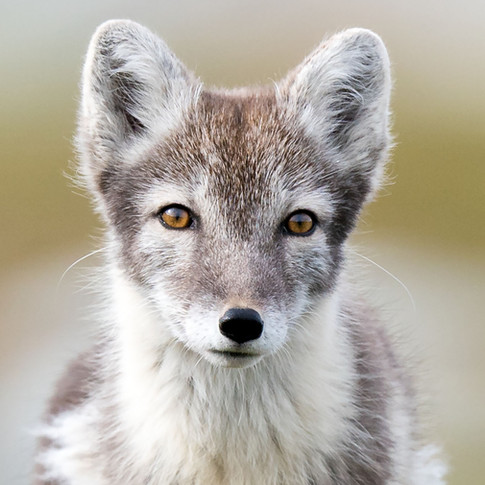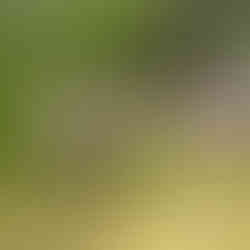Review: SONY 600MM F4 GM OSS
- florissmeetsphotog
- Sep 9, 2019
- 11 min read

In June this year Sony announced two new super telephoto lenses. The 200-600mm f5.6-6.3 G OSS and the 600mm f4 GM OSS. In July I already took the 200-600mm out in the field for an intense week of bird photography (see 200-600mm review) but had to wait a bit longer to get my hands on the 600mm f4. Last week Sony Scandic had a 600mm f4 available and loaned it to me for a week of photography in the mountains of Dovrefjell. Here I got to test the lens in many different situations with musk-ox, arctic fox, wild reindeer, moose and a rare encounter with a Pallid harrier. I also tried to use the 1.4x and 2.0x teleconverters as much as possible in order to show how well the Sony 600mm f4 pairs with these. Additionally, I tested the performance of Optical SteadyShot Image Stabilization. Here are my findings.
Specs Sony 600mm f4 GM OSS
E-Mount Lens / Full-Frame Format
600mm
Aperture Range: f4 – f22
Weight: 3040 gram
Dimensions (diameter x length): 449x163.6mm
Filter size: 95mm
Sony's XD (Extreme Dynamic) Linear Motor autofocus system
Rounded 11-blade diaphragm
Optical SteadyShot Image Stabilization
Dust and moisture-resistant construction
Fixed, rotating Tripod Collar
Price: 13.995,- Euro, 145.000,- NOK, 13.000,- USD
Handling
When lifting up this lens, the first thing what jumps out is the weight. This huge lens weighs in at only 3040 gram, which is just 100 gram more than the 400mm f2.8. I don’t know how Sony managed to keep the lens this light. During the week I have met several other photographers and it was very amusing to see the look on their faces when they lifted up the lens with the Sony a9 attached to it. Every single person was surprised about how light this combination is. I had a guest with me who had a Nikon D750 plus a Nikon 300mm f2.8 plus the 2.0x teleconverter with him. His setup was much smaller due to the lens, but it weighted more than my setup. Due to the low weight of the Sony lenses, I hiked up the mountains with both the Sony 600mm f4 and the Sony 400mm f2.8.
Anyone who knows me, knows that I don’t like to photograph wildlife from a tripod. I almost always work with the lens in my hand. This gives me much more freedom to compose the image as how I want it to be. The weight of the equipment is always a limiting factor for how long I can manage to steady handheld the lens. With this 600mm f4 only weighing 3040 grams, it is no problem to shoot handheld for longer periods of time. All the testing I have done with this lens were done handheld, also when using the teleconverters.

This is me, photographing the wild reindeer with the Sony 600mm f4 handheld.
Sony managed to keep the weight down, but regarding the size of the lens there is not much they could have done to make it smaller. In order to achieve f4 at 600mm focal length, you need a large piece of front glass at a certain distance from the sensor. A 600mm f4 is always going to be a massive piece of equipment. If you compare the lens to the 400mm f2.8, you can see how much larger this lens is.

Sony 400mm f2.8 on the left and the Sony 600mm f4 on the right.
Even though it is this big, I still managed to fit the Sony 600mm f4 mounted on the Sony a9 in my MrJan Gear “Boris” photo backpack.

Sony 600mm f4 mounted on the Sony a9 fits perfectly in the MrJan Gear "Boris" photo backpack.
The only downside of such a large lens is that it catches a lot of wind when it is windy. This makes it more difficult to handhold and get the right composition. The first day I took the lens out it was very windy. Because we were photographing wild reindeer, we could never have the wind in the back. The wind always came from the side or straight in the face. This made it quite a challenge to keep the lens still. Luckily the stabilization works very well and I managed to get sharp images.

Sony a9, Sony 600mm f4 and Sony 1.4x teleconverter @ 840mm, f5.6, ISO 1600, 1/800s
Even with strong wind and no tripod, the image is crisp sharp.
Sharpness
I can be very short on this topic. In my experience this is the sharpest lens Sony has produced until now. It is incredible to see how sharp the images are, even when shooting wide open (f4). The images are absolutely crisp sharp.
Sony a9, Sony 600mm f4 @ 600mm, f4, ISO 800, 1/2500s
On the left the full size image and on the right the 100% crop of that same image.
Autofocus performance
Also here there is not much to say. The Sony's XD (Extreme Dynamic) Linear Motor autofocus system is simply ridiculous fast. The focusing happens so fast that you almost don’t see it happen. You point it at something, push the focus button and BAM the focus is on it. Tracking fast moving subjects won’t be a problem with this lens. Especially not when paired with the Sony a9. For example, while approaching the wild reindeer, suddenly a bird of prey appeared. We could see it just for a few seconds. We were 4 experienced photographers (only me with Sony gear) and only I and one other photographer managed to get a sharp image of the bird when it quickly passed us. The other guy got 4 sharp images, while I got 39 sharp images. This was also the total amount of shots I managed to fire off when the bird past us. Every single image is in focus. Due to these images we could later identify this bird as a Pallid harrier, which is a very rare observation in Norway.

Sony a9, Sony 600mm f4 @ 600mm, f4, ISO 1000, 1/1600s
The lens is also (surprisingly) quiet. The focus system of the 400mm f2.8 makes a light electronic buzzing sound. I expected the same for the 600mm, but there is no sound whatsoever. This makes it perfect for photographing extremely shy subjects. I guess that there are quite a few photographers who regularly photograph wildlife from hides who would love to be able to work in complete silence. Well, now you can.
To give you a better impression of the autofocus performance and the sharpness of the images, below a selection of images taken with the Sony a9 and the Sony 600mm f4 (without converters).
A selection of images shot with the Sony a9 and the Sony 600mm f4 (without converters).
A selection of images shot with the Sony a7RIII and the Sony 600mm f4 (without converters).
Light sensitivity and bokeh
The lens has a lowest aperture of f4. This means that this lens lets through considerable more light than the Sony 200-600mm f5.6-6.3. When testing the 200-600mm, I mainly shot with ISO 1000 and higher. Now I mainly shot from ISO 640 and higher even though it was cloudy most of the time. Additionally, most of the best shooting conditions were in the evening, when there was less light. So I was very happy that I had the possibility to shoot at f4 instead of f6.3, which I would have had with the 200-600mm. I got to work with a lower ISO and therefor maintained a higher image quality. The Sony 400mm f2.8 beats this again of course. But then you have to work with a shorter focal length.
The bokeh is (as you can see in the images) beautiful and butter soft. I needed some time to get used to this extremely soft bokeh of a 600mm f4. Due to the very shallow depth of field, subjects very close to the lens turn into a haze. If you have the foreground too close to the lens, the whole image can turn hazy. I'm used to shoot with the 400mm f2.8, which has a greater depth of field. You can get away with having the foreground much closer to the lens, without getting a haze over the image. Once I got used to keep more distance to my foreground when shooting with the 600mm f4, I managed to improve my images.

Sony a9, Sony 600mm f4 @ 600mm, f4, ISO 800, 1/3200s
Here I had the foreground too close to the lens, which resulted in an hazy picture.

Sony a9, Sony 600mm f4 @ 600mm, f4, ISO 800, 1/3200s
Here I increased the distance to the foreground in order to get a nice bokeh but no haze over the picture.
The Sony 600mm f4 paired with the Sony 1.4x and 2.0x teleconverters
Just like I don’t like to use a tripod for photographing wildlife, I also don’t like to use teleconverters. I always miss moments when I add or take away the converter. …normally always the best moments. Plus adding a converter also influences the autofocus performance and the sharpness of the images. I have the converters for if I really need them and very rarely use them. But I read Sony claims that the Sony 600mm f4 lens should pair very well with these converters. I also often get questions about the teleconverters. Therefor I decided to test how well the 600mm performs with these converters. Also here again, all images are taken handheld.
Sony a9 with Sony 600mm f4 and 1.4x teleconverter
This combination works very well. The autofocus remains fast, but slightly less fast as without converter. Autofocus tracking works like a charm. I didn't need to switch to a single autofocus point or a group of focus points. The images remain incredibly sharp!
Sony a9, Sony 600mm f4 and 1.4x teleconverter @ 840mm, f5.6, ISO 800, 1/800s
On the left the full size image and on the right the 100% crop of that same image
A selection of images shot with the Sony a9, Sony 600mm f4 and 1.4x teleconverter
Sony a9 with Sony 600mm f4 and 2.0x teleconverter
Here I noticed that the autofocus started to slow down a bit. Acquiring focus took a bit longer but the focus stayed very well on the subject. When using autofocus tracking, the camera would sometimes jump onto the vegetation instead of the animal. This is something I experienced with other camera brands but then already without any converters. So nothing to worry about. The sharpness really surprised me here! I expected the images to be very soft and not usable for larger prints. But the images are still very sharp! Below a selection of images taken with the a9 and the 2.0x teleconverter.
Sony a9, Sony 600mm f4 and 2.0x teleconverter @ 1200mm, f8, ISO 1250, 1/1000s
On the left the full size image and on the right the 100% crop of that same image
A selection of images shot with the Sony a9, the Sony 600mm f4 and the 2.0x teleconverter
Sony a7RIII with Sony 600mm f4 and 1.4x teleconverter
I also decided to test how the lens performed with converters on the Sony a7RIII. With the 1.4x converter I didn't notice any problems with the autofocus. I guess it was slightly slower, but not very noticeable. The images remain incredibly sharp.
Sony a7RIII, Sony 600mm f4 and 1.4x teleconverter @ 840mm, f5.6, ISO 800, 1/1000s
On the left the full size image and on the right the 100% crop of that same image
Sony a7RIII with Sony 600mm f4 and 2.0x teleconverter
Here the autofocus started to suffer a bit. Not all images were in focus where the focus point hit. Still 2 out of the 3 images were in focus and 1 out of 3 was slightly out of focus. Also here I am very surprised to see how sharp the images remain with the 2.0x teleconverter. Of course the images are not as sharp anymore as without converter, but the images are very usable. Even for printing.
Sony a7RIII, Sony 600mm f4 and 2.0x teleconverter @ 1200mm, f8, ISO 1000, 1/1250s
On the left the full size image and on the right the 100% crop of that same image
Optical SteadyShot Image Stabilization performance
Since I mainly work without a tripod, I wanted to test how well the image stabilization works on the lens. I wanted to test this in the field on wildlife, but sadly had forgotten about it. Therefor I had to run the test on a tree in front of the Sony office. In order to test the stabilization performance, I shot bursts of 10 images at shutter speeds ranging from 1/50s up to 1/320s. I counted the number of sharp images within each burst of 10 frames to indicate how well the stabilization works. These are the results:
Shutter Number of
speed sharp images
1/50: 3 out of 10
1/60: 4 out of 10
1/80: 3 out of 10
1/100: 6 out of 10
1/125: 5 out of 10
1/160: 8 out of 10
1/200: 10 out of 10
1/250: 10 out of 10
1/320: 10 out of 10
Sony a9, Sony 600mm f4 @ 600mm, f4, ISO 200, 1/50s
On the left the full size image and on the right the 100% crop of that same image
As you can see, from a shutter speed of 1/200s and higher I managed to get all 10 images sharp. The number of sharp images between 1/50s and 1/160s didn't increase always in each step. This could be due to the wind. There was a slight breeze which sometimes moved the leaves. I tried to shoot when there was no movement in the leaves. But during a burst, there could have been some movement. Either way, I'm still impressed that I managed to get some sharp images with a shutter speed of 1/50s while handholding the 600mm f4. I should have checked until what shutter speed I would have been able to get a sharp image. This I will do the next time I can lay my hands on this lens.
Pricing
The lens is priced at 13.995,- Euro, 145.000,- NOK or 13.000,- USD. This makes it the most expensive Sony lens on the market. But when you look at the prices of the Canon and Nikon 600mm f4 lenses, the difference isn't that big. In America the Nikon is 700 USD cheaper and the Canon is 1 USD cheaper than the Sony. Here in Europe the prices differ a bit more, depending on the country. Considering that the Sony lens is the lightest and fastest of the three brands, I would say that it is priced right. I have not been able to find any side by side tests of the Sony 600mm f4 lens versus the Canon or Nikon 600mm f4 lens. So I cannot say which lens is the absolute best.
Yes, it is a bloody expensive lens. But this is not a lens for the hobby photographer who sometimes likes to photograph birds at a feeder. This is a lens for the professionals and the more serious photographers who are willing to invest in a high quality piece of glaswork which will result in high quality images.
Conclusion
Sony has managed to produce another beast of a lens. The 600mm f4 GM OSS is the sharpest super telephoto lens they have produced so far. With the weight of only 3040 gram, this lens is the lightest of its kind and makes it an absolute pleasure to work with for wildlife photography. It is possible to photograph handheld for longer periods of time without any problems. Due to the size of the lens, it catches a lot of wind. This makes it more difficult to get the right composition when shooting out of the hand. With the Optical SteadyShot Image Stabilization it is possible to get sharp images down at a shutter speed of 1/50s while shooting handheld. From 1/200s I even managed to get every single images sharp. The Sony's XD (Extreme Dynamic) Linear Motor autofocus system is incredibly fast and accurate. Additionally, the focus system is almost completely silent, making it perfect for photographing shy species. With as lowest aperture f4, there is plenty of light to work with and the bokeh is buttery soft. The lens pairs extremely well with the Sony 1.4x and 2.0x teleconverters. I am positively surprised by the sharpness of the images with the 2.0x converter. I didn't expect this amount of detail to be maintained in the images. When looking at the performance of this lens and the Sony a9, I think that this could be the ultimate bird photographer setup you can currently get. The lens is expensive, but priced accordingly to the competition.













































































































